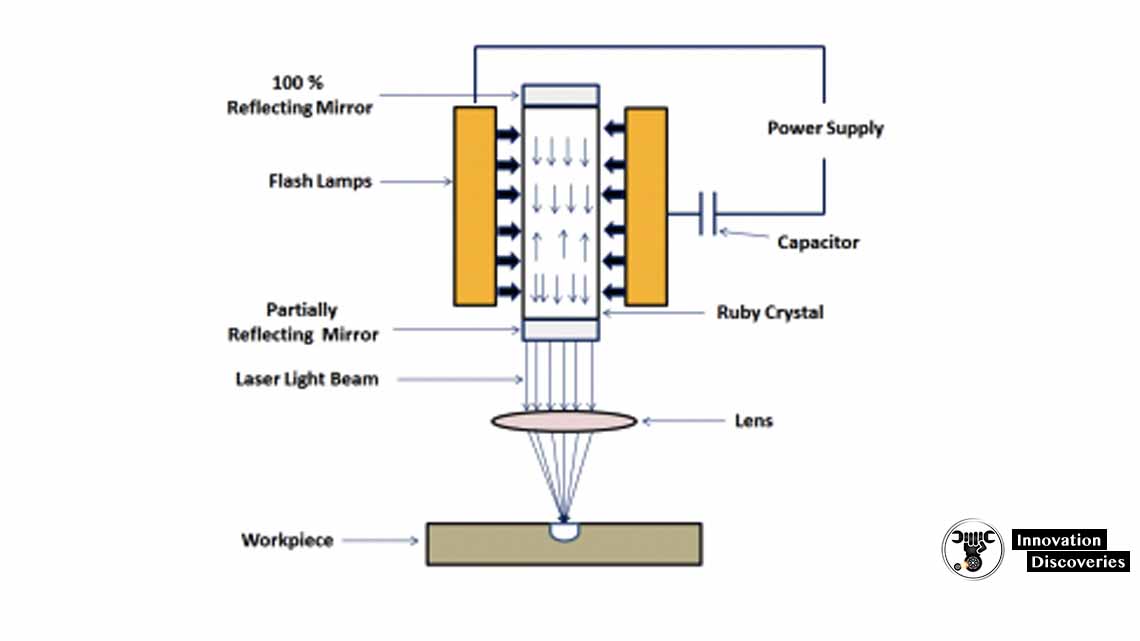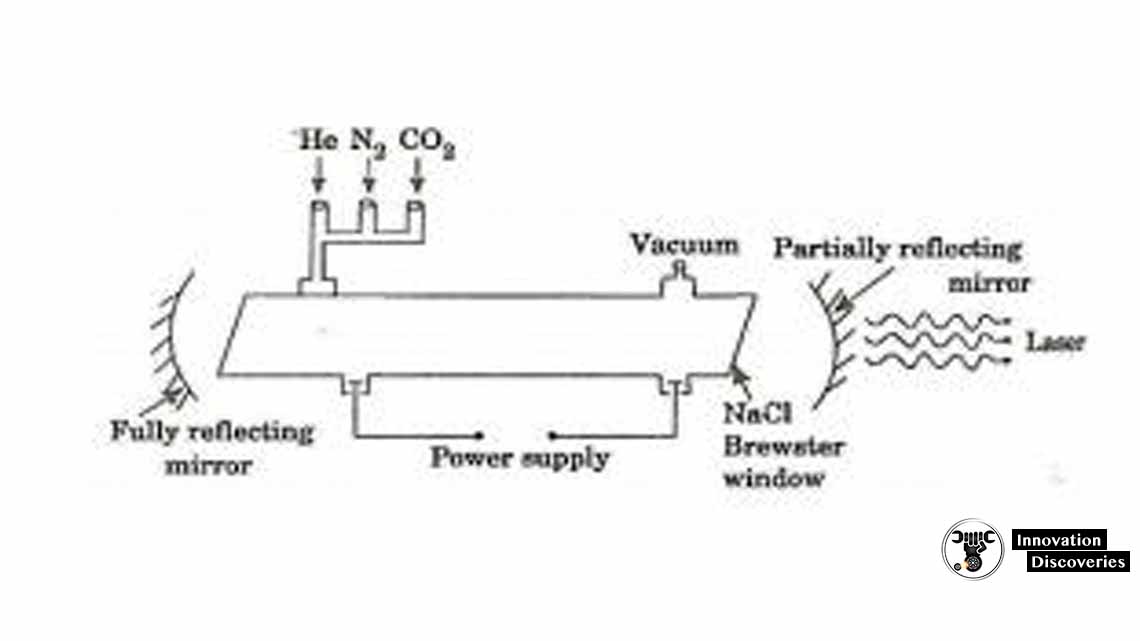The laser is Light Amplification by Stimulated Emission of Radiation,
And Laser beam machining is a non-traditional way of manufacturing.
In fact,
It’s a subtractive manufacturing process in which a laser beam is used for
Cutting through the metals and other materials for getting the desired product.
The process of laser beam machining uses the thermal energy of the laser to cut,
Heat and vaporize the materials in use or question.

This process finds its best application in carving out things
From brittle materials with low conductivity.
High-frequency monochromatic laser beams can work
Very well with brittle materials as they do not produce much vibration.
Here, It becomes vital to discuss various types of lasers
That can be used for laser beam machining. Although lasers are of many types.
But the most commonly used ones are the gas type,
Solid-state lasers, and excimer lasers.
In Gas Lasers,
Electricity is passed through gas ensuring that a constant beam of
Monochromatic high energy light is produced. They also produce a consistent beam of light. Most commonly He-Ne & CO2 are the preferred gases used for producing the laser beam for machining purposes.

Solid-state lasers use doping a metal into many host materials. Unlike gas lasers, solid-state lasers are pumped optically with the help of an arc lamp.
Ruby is one of the elements used for solid-state lasers. The ruby laser produces deep red light pulses of millisecond
Pulse length and a wavelength of about 695 nm.
Ruby laser is pumped by a xenon flash tube before its actual use. Extra type of solid-state laser is the YAG laser. Yag lasers have neodymium-doped yttrium aluminum garnet
Crystals as a laser medium. It produces beams of very high energy.
An Excimer laser is an ultraviolet-based laser,
It is used in producing microstructures.
It uses a combination of reactive and inert gases to produce a beam.
At times, it is also referred to as the ultraviolet chemical laser.
Cutting Depth of a laser
It is represented by the following equation :

where:
t =depth of cut
P = laser beam power
v = cutting velocity
d = laser beam spot diameter
Applications of laser machining
Laser Beam Machining can be used for cladding, cutting,
Welding and drilling.
It finds wide applications in various industries like space tech,
Automobiles, avionics,
Shipbuilding and many other manufacturing processes.
Laser welding is by far the most efficient and fast welding technique ever.
It can ever weld at speeds up to 100 mm/sec.
Laser cladding is used to provide a protective cover to the damaged surface. It is one of the cheapest ways to offer protective cladding to date,
Not to mention one of the fastest too. Drilling and cutting using lasers as a tool have a
Distinct advantage that there is no wear and tear of the drilling equipment. Also, a very cheap alternative to traditional drilling tools. Saves lots of time and money.
In most of the modern industrial applications,
We would find laser machining working in tandem with traditional machining.
This mix of machining results in a more efficient and economical machining process. The best application of laser beam machining is in working in high precision environments. The laser can work where traditional machining cannot.
Also, read:



One Comment